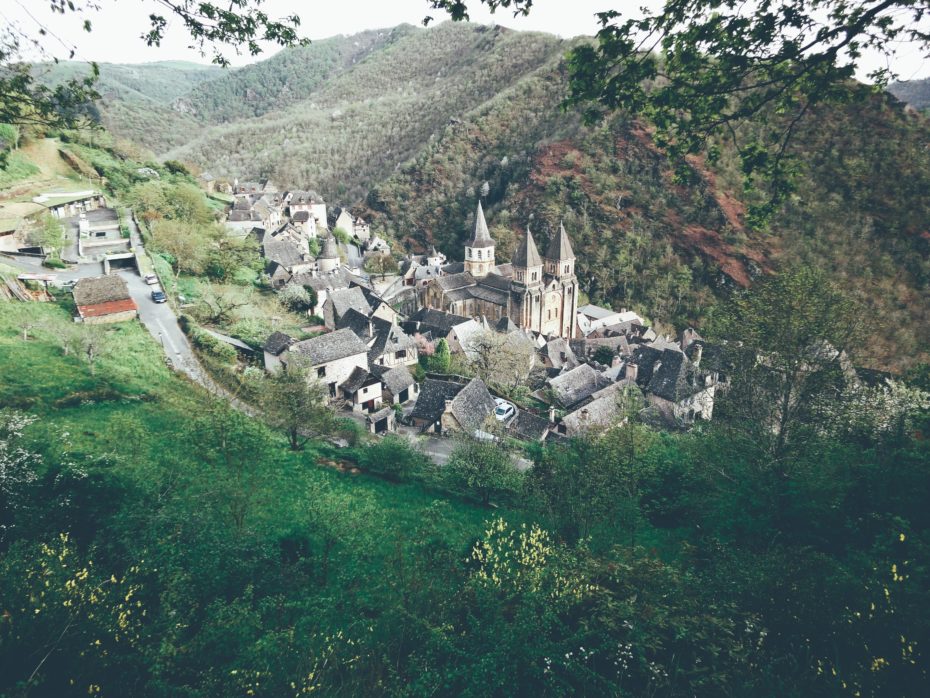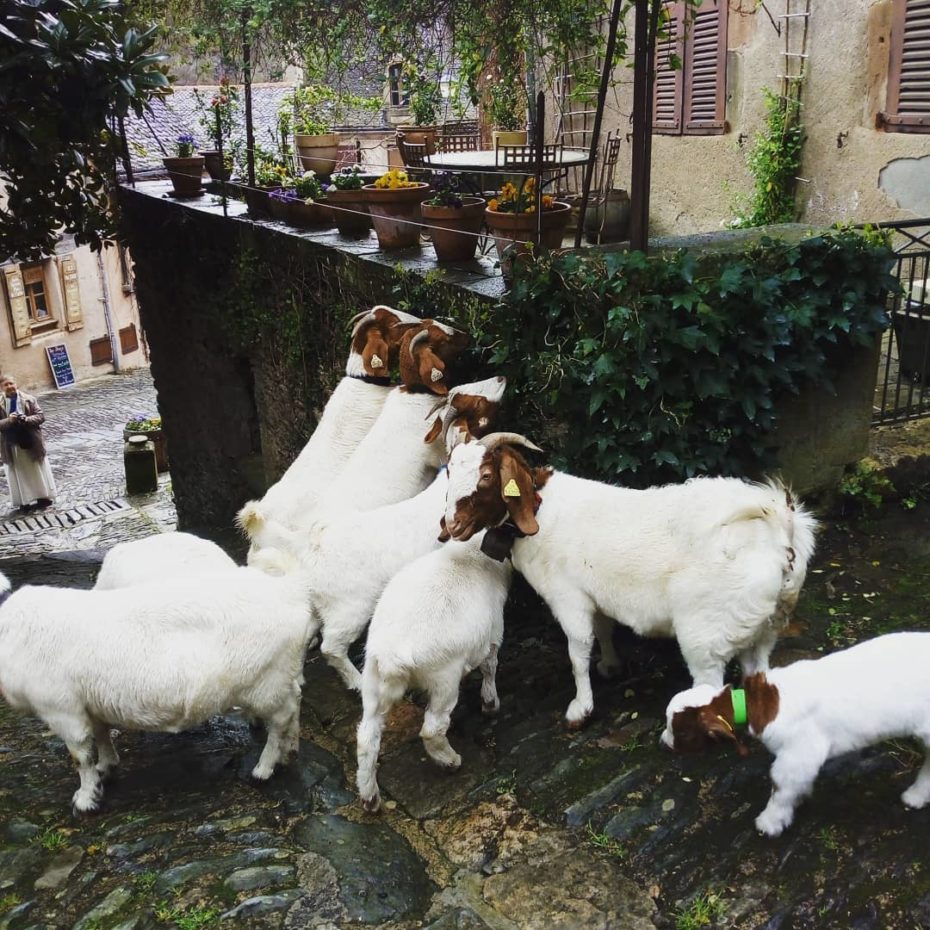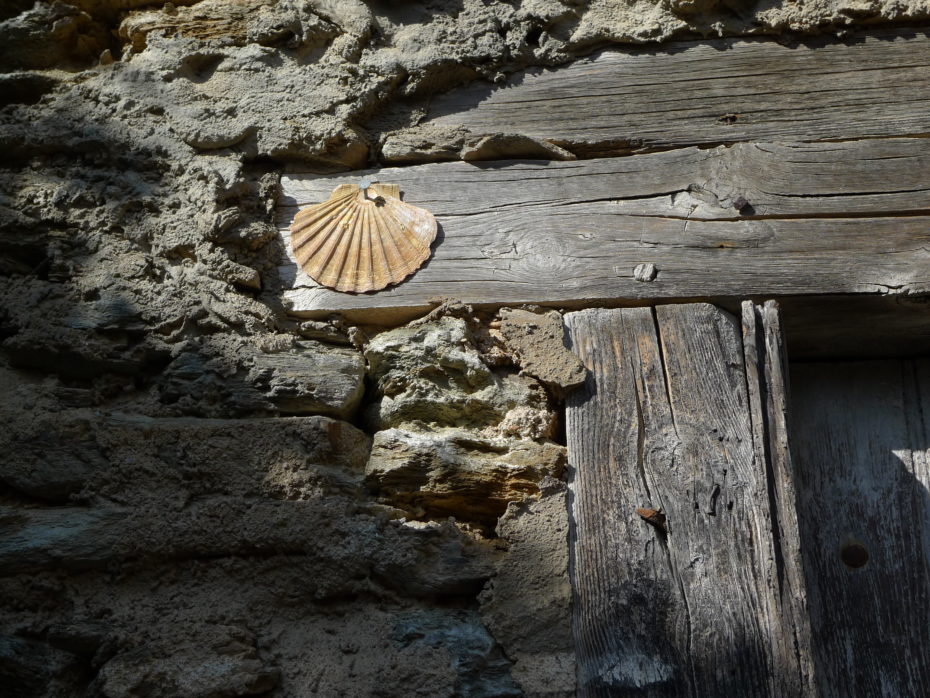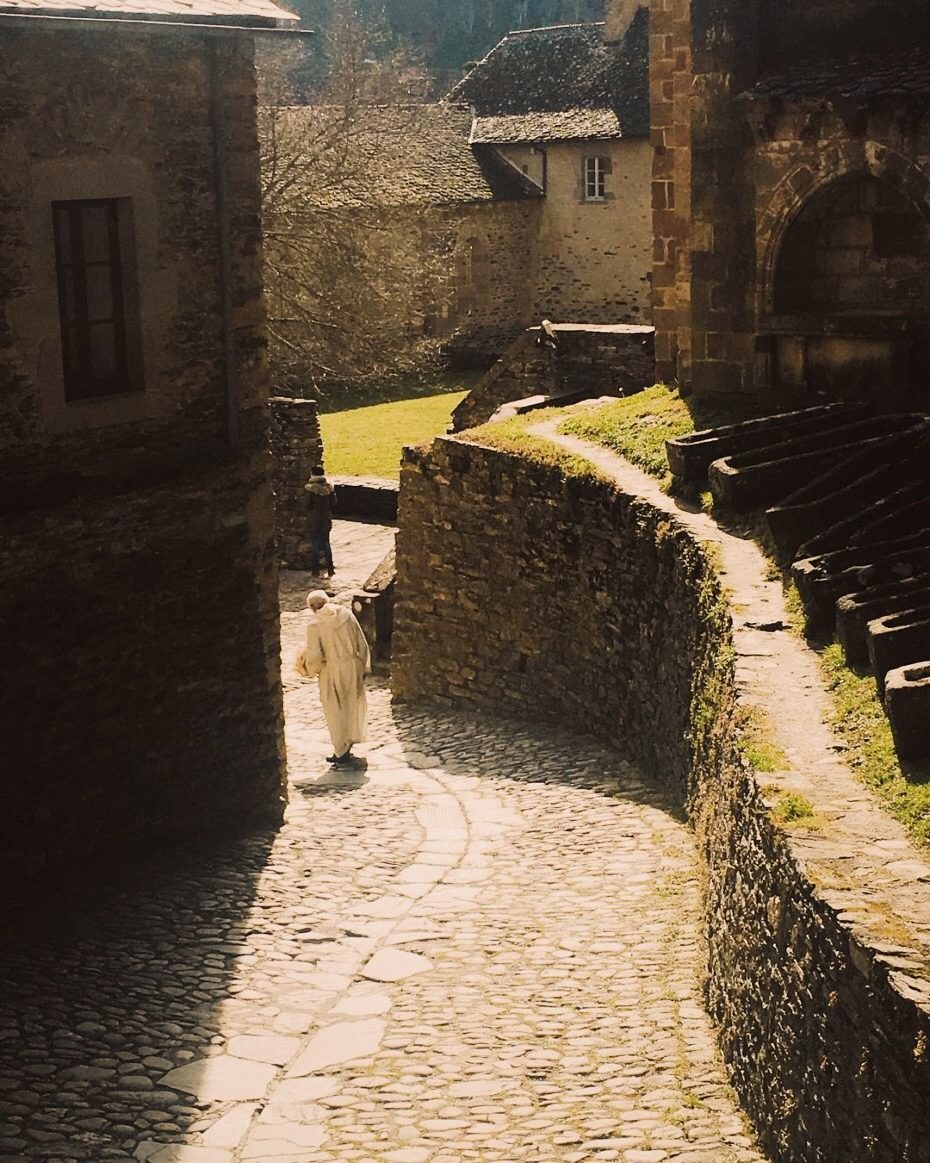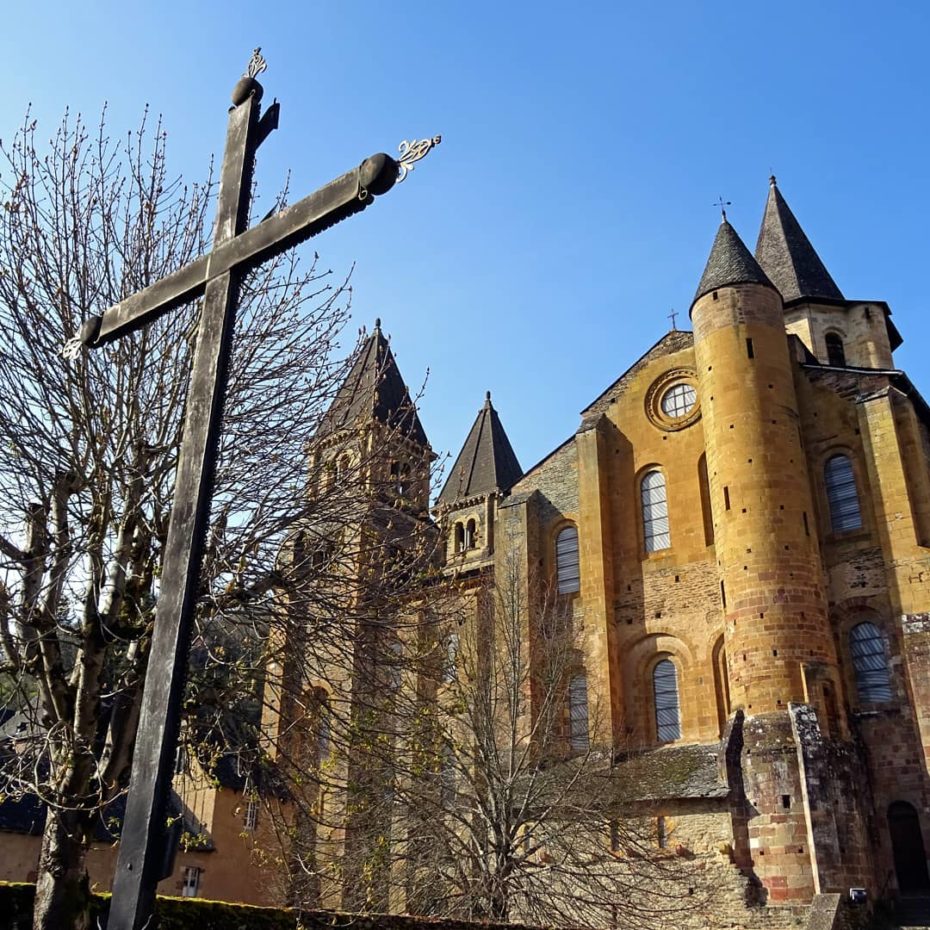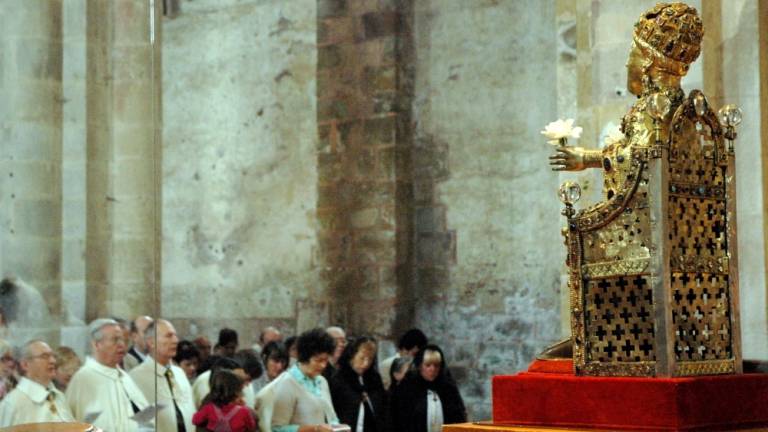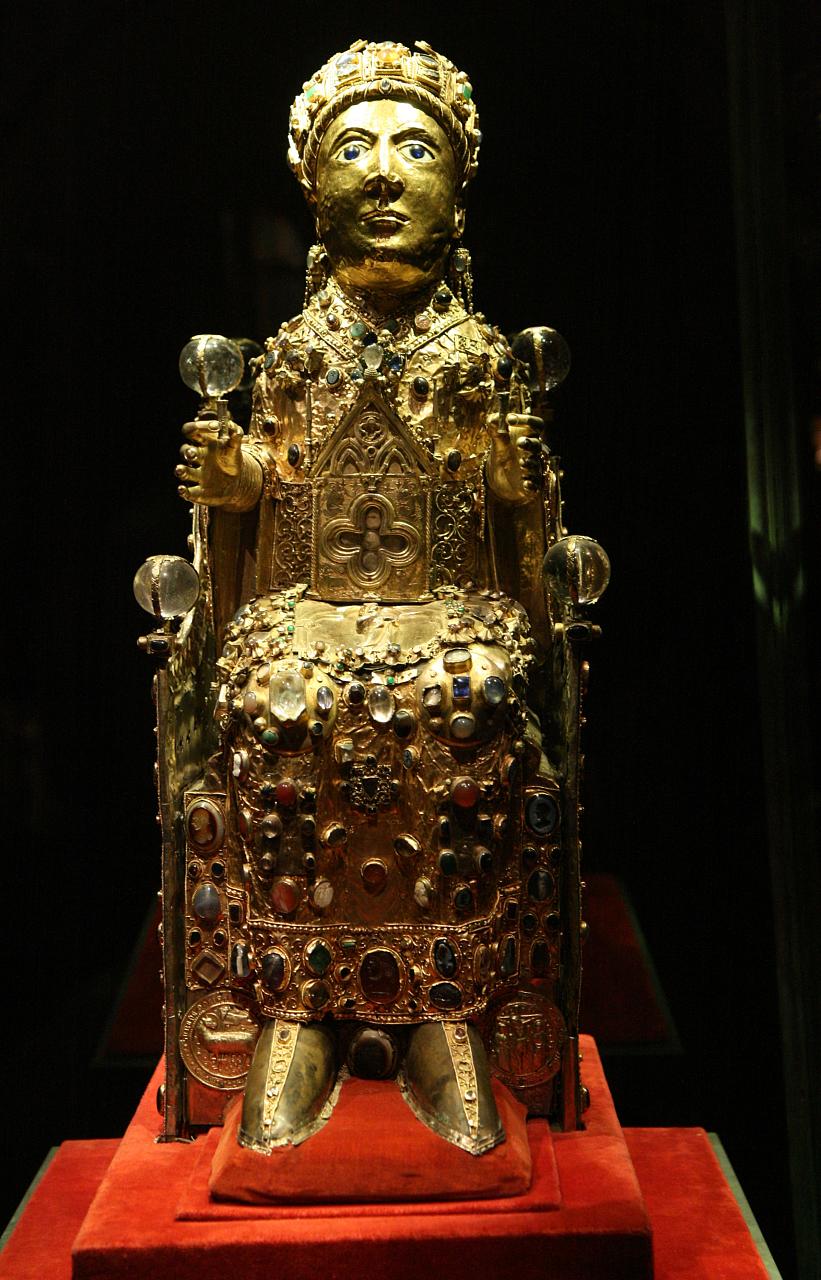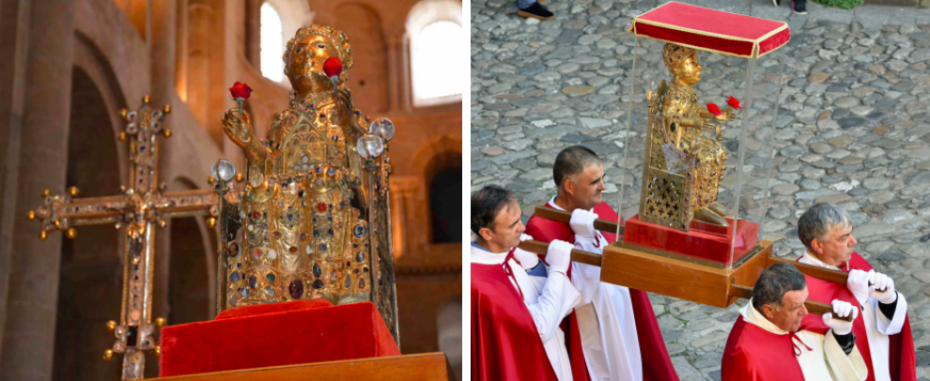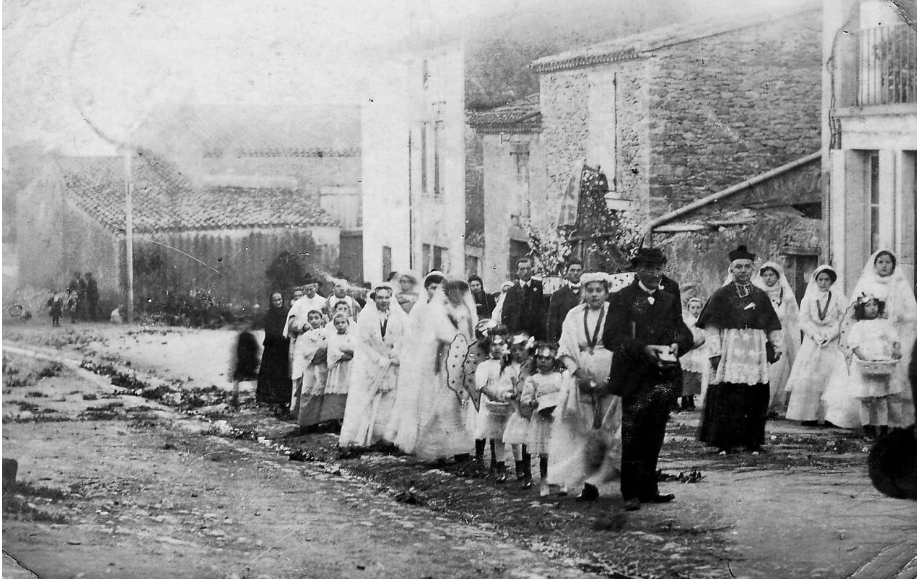Conques was never supposed to be found. Or at least, not easily. The sleepy village had been presiding over the French Midi-Pyrénées mountains since the 7th century, when a monk named Dadon decided it would make the perfect place for sacred hermitage. Not only was the valley close to a legendary Roman spring, but it was nearly impossible to reach without a lot of grit and motivation, making it the perfect resting place for one of Europe’s grandest treasures…
But we’ll get to that in a moment. First, let’s take a stroll through Conques (pronounced “conk”) which is, thanks to the magic of Google Maps and four-wheel drive, a bit easier to get to these days. There are about 255 habitants in the medieval village, and a good number of them are goats, cats, and cattle. The souvenir of choice is usually a bottle of the area’s Marcillac wine, or a golden cow bell.
The name “Conques” comes from the ye-olde French word for “shell,” conche, and is also a telltale sign of its history as an important site for religious pilgrims on their way to the coastal town of Santiago de Compostela, the alleged burial site of the Biblical apostle St. James. Hence, the many seashells nailed upon the doors of locals. For about a thousand years, they’ve served as a secret welcome sign for the pilgrims.
The main attraction at Conques? The relics of a martyred 12-year-old girl named “Faith” (St. Foy in French) from Aquitaine, which date back to the 4th century. According to legend, she was killed by the Roman Emperor Diocletion because she just couldn’t stop performing miracles, so he essentially BBQ’d her on a griddle. He also cut off her head for good measure.
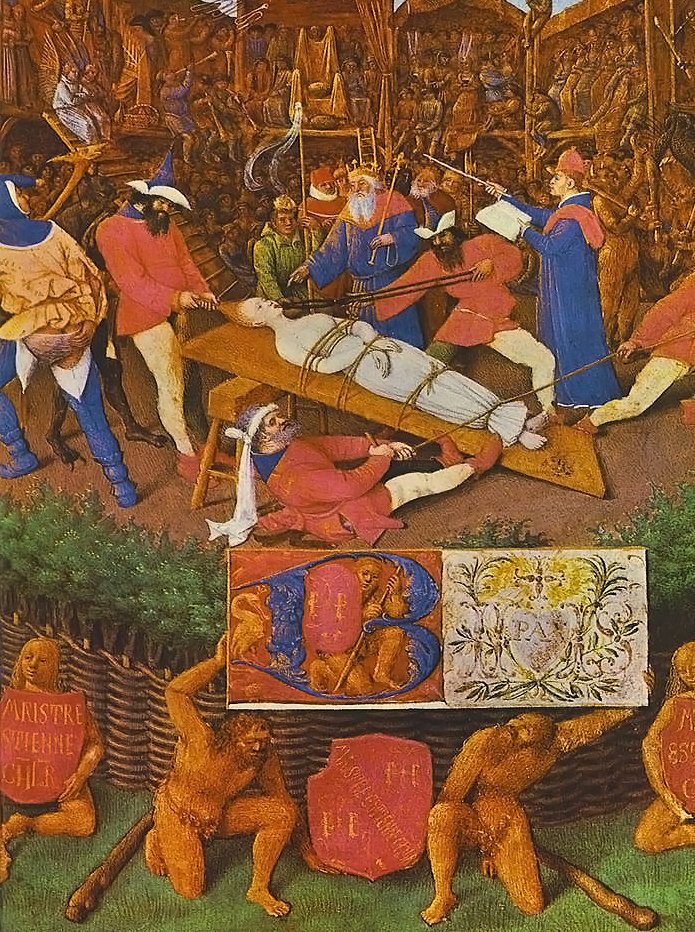
Her remains proved to be just as powerful in their miracle making, so much so that the monks from Conques actually stole them from Faith’s hometown of Agen to bring a little bit more life into the village when its isolation started to become a serious economic detriment. Pilgrimage, they realised could also become a form of tourism. And to this day, they’re tucked away in the Abbey Church of Saint Foy…
The church itself is a relic of medieval craftsmanship, with eerie stone figures popping out of every nook and cranny. One even has to pass under a stone carving of Judgement Day to enter the Abbey, and a series of mischievous figures called “the Curious Ones.”
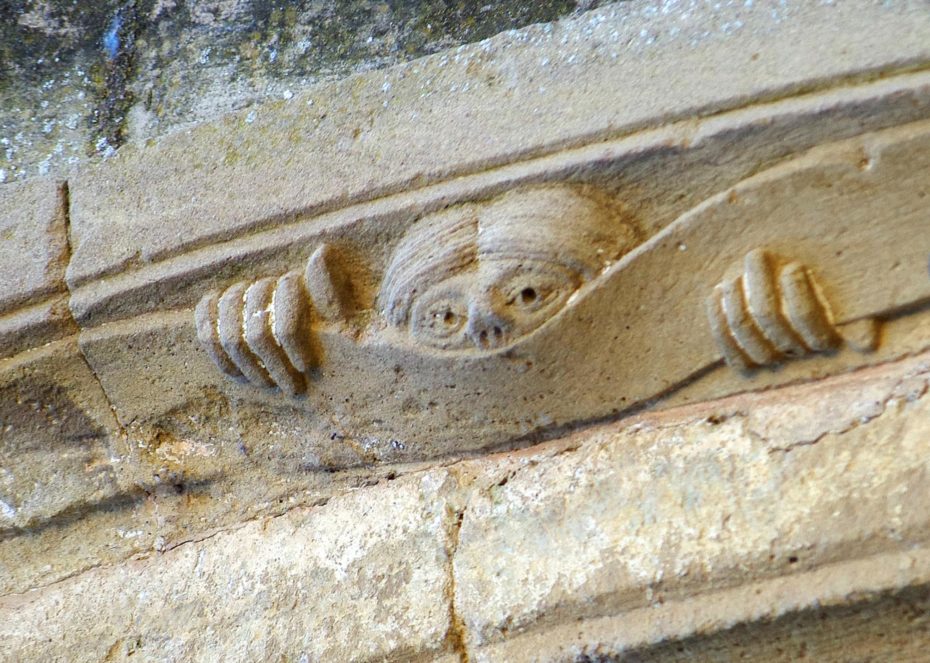
A “Curious One”Peuplier
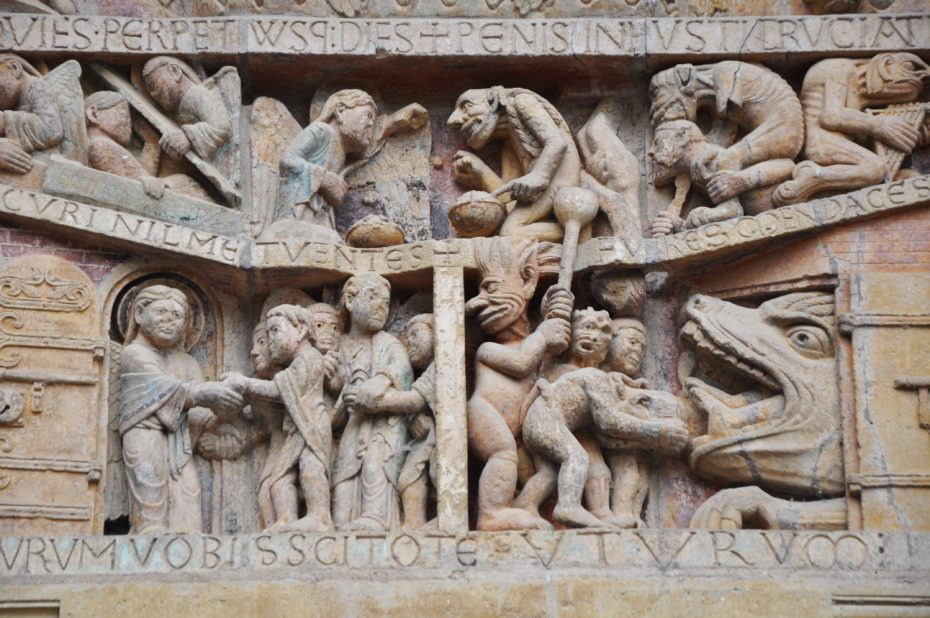
Judgement Day©Jan Berckmans
But step inside, and you’ll be rewarded with a vision of the gilded statue housing the remains of Faith’s skull.
The statue is one of the last reliquaries of its kind in Europe in matters of craftsmanship and, well, bling factor. Ancient accounts state that certain monks were “frightened that the statue was too beautiful,” with Bernard d’Angers stating, “What do you think of this idol? Would Jupiter or Mars consider himself unworthy of such a statue?”
“He was concerned about idolatry,” says historian Elisa Foster, “that pilgrims would begin to worship the jewel-encrusted reliquary rather than what [it] represented… her dress is covered with agates, amethysts, crystals, carnelians, emeralds, garnets, hematite, jade, onyx, opals, pearls, rubies, sapphires, topazes, antique cameos and intaglios. Her face, which stares boldly at the viewer, is thought to have originally been the head of a Roman statue of a child.”
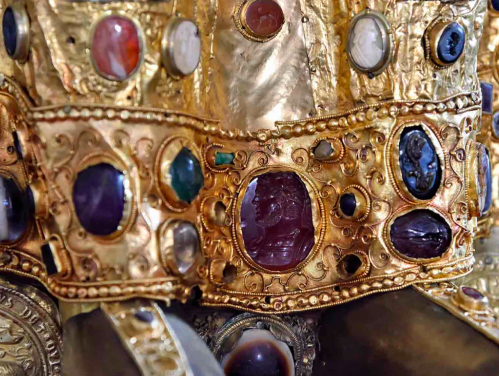
©Conques Marcillac
What’s more, the statue is essentially the crown jewel of a jaw-dropping collection of gilded medieval treasures on display, amongst them the arm of George the Dragon Slayer and a gilded letter “A” belonging to Charlemagne himself.
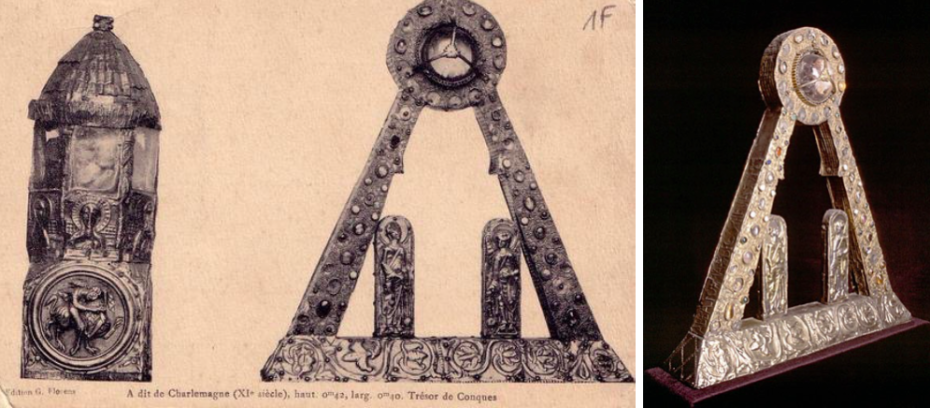
Vintage postcard of Charlemagne’s A.
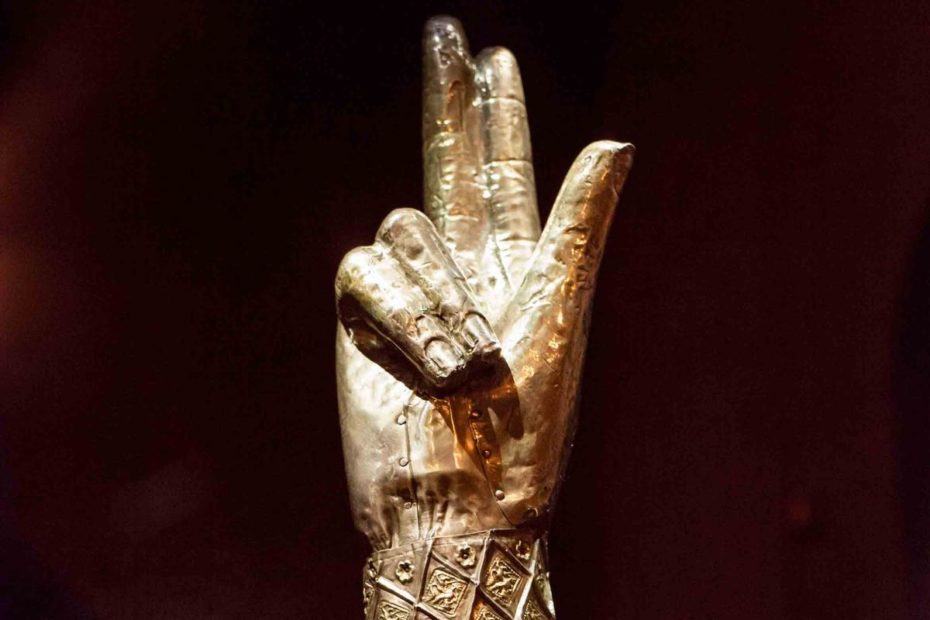
©Toursime-conques. The arm of Georges the Dragon Slayer.
But it’s the priceless statue of Faith that’s left its mark on pilgrims and tourists alike. “The expression is curious and somewhat unsettling,” said New York Times journalist Macdonald Harris, “It might be called a Mona Lisa smile, except that the saint is not smiling. She is simply knowing and mysterious, faintly amused.”
The grand, albeit stolen tresor of the village goes for an annual parade around the town every April in a tradition that dates back thousands of years.


